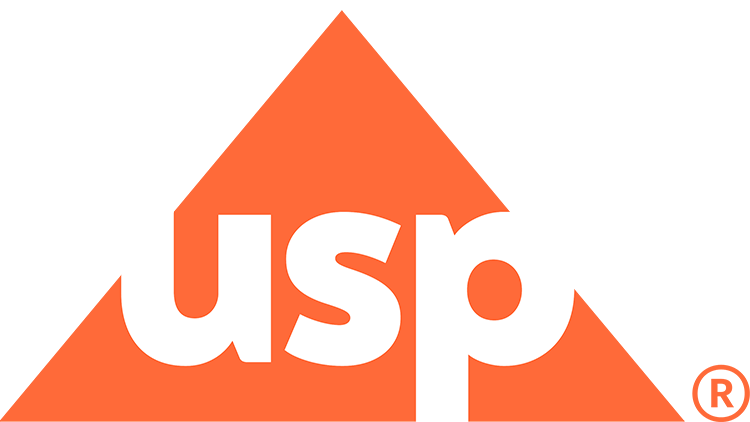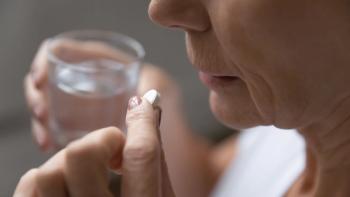
Overview of New USP Chapters, Upcoming USP Chapters on Temperature Excursion Management for Drug Storage, Distribution

Desmond Hunt, PhD, senior principal scientist at US Pharmacopeia (USP), discusses the standards and resources that USP has recently published or is looking at now on the subject of pharmacy in transit.
Pharmacy Times interviewed Desmond Hunt, PhD, senior principal scientist at US Pharmacopeia (USP), on USP’s works in the area of storage and distribution, including the management of temperature excursions.
Alana Hippensteele: Hi, I’m Alana Hippensteele with Pharmacy Times, and joining me is Desmond Hunt, the senior principal scientist at US Pharmacopeia, or USP, who is here to discuss aspects of pharmacy in transit, including temperature excursions.
So Desmond, could you explain a bit about how USP works in the area of storage and distribution?
Desmond Hunt: So that's a very good question. So I want to start off by talking about why USP got into this space initially, and this goes back to 1995 during our 5-year annual convention. A resolution was put forth the convention to start looking at developing standards and guidance to ensure that product quality is maintained from the time a product is manufactured all the way to when it’s seen by the end user.
By 1995, there were a handful of studies that were developed by USP, looking to see what type of temperature variations drug products come in contact as it's moving through the supply chain. What we actually know, the temperatures can be extremely high, as well as extremely low, both of which can have a significant impact on drug product quality.
We also looked to see what the impact on the quality of the product. So you start to see when you have extremely high temperatures, how this impacts the quality of products, as well as when the temperature is extremely low, how does this impacts the quality of products. This led to the development of our keystone standard today, which is 1079, the storage and distribution practices. This chapter has been in USP since 2004; it has been revised multiple times, the most recent being in 2019.
Where today the focus of the chapter isn't on getting basic guidelines around proper storage and distribution, but talking about the importance of organizations identifying the risks related to improper storage and distribution within their organization’s system, and putting into place the necessary mitigation strategies.
Alana Hippensteele: Right, absolutely. What risks should pharmacists be thinking about when it comes to the storage and distribution of finished drug products, such as during extreme weather conditions such as extreme cold or extreme heat.
Desmond Hunt: So when I think about risks that a pharmacist is going to encounter in their daily lives, I like to think about them in a very broad sense of environmental factors because these are the things that are going to impact the products as it’s moving through the supply chain.
When we think about environmental, I like to think about light, again, light can have a significant impact on light-sensitive products. But there are some environmental factors that most people, especially pharmacists, may not think about, such as shock, vibration, and compression. These types of environmental impacts can actually lead to damaging the overall drug product packaging system that can lead to drug product leaking out. In the worst-case scenario, cause a leak in the packaging system that can lead to microbial ingress, and other potential patient safety risks.
But the one environmental factor that we always talk about is temperature, temperature, temperature. That's because, again, temperature can be high, can be low, and sometimes can be quite difficult to maintain while it's being shipped, or even within a storage facility if there has been an instance related to a power outage. So when we think about temperature and its impact on the drug product, you have to think about this two ways in which it can impact stability. You can see chemical changes in the drug products, which can lead to degradation of the drug product, which can impact the efficiency of the drug product, as well as increased barriers and degradative processes, which can lead to increased impurities in the drug product.
Then we have to consider physical changes. This is when the temperature gets so high, they call the product melt repository, or in the worst-case scenario, when products should be refrigerated and it's frozen, then it can lead to crystallization of a product as well as particulate matter formation. So when we think about environmental impacts, we tend to focus in on temperature, and I have to say probably the easiest one to identify is physical changes. Obviously, if you have a product that is frozen, it's very easy to see. It's really the ones that go through the chemical changes that are quite difficult. An excursion that’s 10 minutes versus an hour, may not seem like a very significant impact on the product, but it could actually be something there.
So when we start thinking about some of the risks that may be encountered in the pharmacy space, it used to being simply the improper storage of a drug product as it's being received. We have a product that may need to be refrigerated and you actually freezing. As I mentioned previously, temperature—high as well as low—can have an impact. If you freeze a biologic, for example, you could pretty much affect the potency of that and make it ineffective. Improper training of personnel, there's been many situations that I've heard of where there may be a very short-term excursion that may have a minimal impact on the drug product, but the organization didn't know how to deal with the excursion, so instead of being a 10-minute excursion, it ended up being a 60-minute or 2-hour excursion, which again, the longer the excursion you have, the greater the impact on the product.
Then again, you can have risks related to the breakdown of various equipment, whether it's your freezer or your refrigerator, the temperature monitor, alarms on the refrigerator, all of these things are potential risks that one should always be aware of in trying to put in place necessary mitigation strategies to either eliminate, or at worst case, try to limit.
Again, I think I can probably speak for the next 20 minutes about various risks in a pharmacy space. But I would definitely recommend that those who are interested in learning more go and look at the USP General Chapter 1079, because we outline what are the common risks that can be identified in pharmacy space, but more importantly, what are some of the mitigation strategies are that can put in place in order to eliminate them.
Alana Hippensteele: Absolutely, absolutely. You discuss some of the potential prevention strategies that you could rely on in certain extreme temperature situations. What about with natural disasters? There's been an ongoing, I would say rising number of natural disasters that may or may not be related to weather phenomenon. So how do you prevent or prepare in terms of temperature excursions, and what do you do if you have one, in relation to a natural disaster?
Desmond Hunt: So this is another good question. We always have this fundamental discussion about how you can prevent temperature excursions. And I hate to say this because it is the truth—there's no way you're going to ever prevent from having temperature excursions, no matter how hard you try, no matter what things you put in place, because we just know that we don't know when the next natural disaster is gonna occur. I mean, even looking at the common everyday practices within the pharmacy, you have no idea when a refrigerator or freezer may go down and you may need to move product quickly or when there may be an electrical outage. So when we think about natural disasters, or any potential risks related to storage of a drug product in a facility then you get to understand what that risk is.
Then once you understand that risk, half the battle is won, because now you can start thinking about what are your next steps are. I know, these are potential risks that I have. What can I do to kind of offset these risks. Again, when we think about like electrical outages in most facilities we will have a backup generators. And that's something that can mitigate the risk of electrical outage. When you start thinking about units going down, such as refrigerators and freezers, then you might want to think to yourself, “I have 2 freezers in my facility, if one freezer goes down, I can move product from the unit that went down to the one that actually works.”
But if not, you have to think about what you can do to make sure that product can move really quickly to another freezer to ensure the safety of the product won't be compromised. And so obviously, if you think about temperature excursions, we want to prevent them at all costs. But we live in an era where everything is going to be more risk based, so understanding the risk is always going to be the first step that you want to take, and then figure out how to eliminate or minimize.
Alana Hippensteele: Right, absolutely. How does USP recommend stakeholders ensure they are working with reliable supply chain partners?
Desmond Hunt: That's a very good question. Because we have a very convoluted supply chain—we all have supply chain partners, which is going to be someone either giving you a product or giving you a service, and what you want to know when you're working with someone is that today, tomorrow, and in the future, that product or service that they give you should have a certain quality based on your quality expectations. And there's no other way to kind of understand who your supply partner is, and whether they're going to allow or be able to give you the service or product that's necessary, unless you put in some formal qualification process. And this really is a formalized process of identifying potential suppliers for product and service, you want the assessment of them, approving them, and, more importantly, monitoring them from year to year to make sure that again, your expectation of the quality that you want for your product or service is going to be the same because, if their service of quality reduces, they are going to have an impact on the quality of the product that ultimately goes to you patient.
So this is kind of a new topic that we've been discussing within USP and has led to the development of a new USP chapter, 1083 Supplier Qualification. The chapter kind of talks about supplier qualification from a lifecycle approach, what you do in the beginning when initiating discussions to actually bring on board a supplier, all the way to the end when your disqualifying a supplier because they no longer offer that service or product. This is a chapter that has gone into USP’s commenting process, and we're at the point now where within the next year you should see when the final version of the chapter, published in the USP, it will be used by stakeholders. So this is another one of the chapters that’s new, there’s a lot of useful information in there about how one goes about qualifying suppliers, and if there’s an interest, please look forward to that in the future.
Alana Hippensteele: Absolutely. What is different today than it was 5 years ago in relation to potentially pharmacy and transit more broadly?
Desmond Hunt: So what we see today in comparison to 5 years ago is that there's definitely a greater interest in the topic of storage and distribution, and specifically temperature excursions, especially in the pharmacy space. I base this on the number of comments that I receive, weekly or monthly on the topic, whether it's someone asking me about whether or not temperature excursions are impactful, or if it’s someone asking me about how can they ensure that they have the right processes in place to ensure that the product is being stored properly. So again, this is a topic that's on the radar in the pharmacy space, which again, I think is mainly due to again a greater awareness of the impact on the product quality when storing product improperly, and it’s back to this question that we're starting to see natural disasters much more often, when you start thinking about a hurricane that comes through a city or a flood, you're going to impact the pharmacy practice because you’re not having electricity for a certain period of time, the fundamental question is always, what is the impact on my drug product if I have an hour, 2 hour, or even 2-week temperature excursion on my product.
So I think what we see different from in the past today is today that there's definitely more interest. I'm definitely starting to see more companies emerging that want to work in this space, whether it's companies to help manage your temperature monitoring system within your facility, don't calibrate it, or in some cases take over your whole operation as it relates to proper storage and distribution of the product.
So again, I think that as this becomes a bigger and bigger topic within the pharmacy space, we will see more technologies being added, and I would say there's been a lot of discussion around proper packaging material that's being used to package products from a pharmacy that goes to a patient, again, ensuring that system is qualified. So again, I think it's a new world in the pharmacy space as it relates to the storage and distribution practices, and I think 5 years from now, we'll be talking about other things that are going to happen.
Alana Hippensteele: Absolutely. And so in relation to maybe 5 years into the future, what do you think that future might look like for storage and distribution considering 5 years ago, you were discussing how different things were from how they are today—so what might the future look like?
Desmond Hunt: So when I think about the future in the pharmacy space, overall as it relates to storage and distribution, I think when we think about the future, we think about technology. I think we're starting to see technology being developed that will allow us to monitor products as a new supply chain, and more importantly, allow us to monitor their temperature. We know today that it's possible, if you just look at the energies and efforts and innovation that went into shipping COVID-19 vaccines around the world, ensuring that they stay in very specialized storage, so we know the technologies there. But in the future, when it gets to the point where it's more cost effective, you start seeing it being used more and more throughout the supply chain.
You're definitely going to start seeing more novel shipping containers being used to store products as they move through the supply chain. As I mentioned, we're starting to see more and more drug products being shipped from pharmacies to the patients. So we have boxes going through the mailing system. So the right measures have to be put in place to ensure they’re packaged properly, but also that that package is suitable enough to maintain the temperature throughout the life of the product. So I think what you're gonna start to see come together as technology, knowledge, and information sharing in many of these things that we've talked about as far as proper storage of the drug product, and we understand from the drug product manufacturer, but one of the things that we'll have to do in the pharmacy space to probably have more discussions around these topics that traditionally were left to the drug product manufacturers.
Alana Hippensteele: What are the standards and resources that USP is looking at now, and how can pharmacists get involved?
Desmond Hunt: Within the USP, we've been in this space since 1995. But our first chapter was developed in 2004. That chapter has been revised multiple times with the current version being what you will find in USP. After we started revising that chapter, we asked ourselves the fundamental question: What are the next chapters that we might want to take a deeper dive in and develop standards around. Again, what we tried to do was kind of look at what are some of the comments that USP’s been seeing over the past 5 or 10 years, and that became our guiding light in to some of the standards that we should actually make. So that led to the development of a standard that looked at what are some of the best practices for ensuring good distribution practices for the investigation of drug products.
This also led to the development of a new chapter that actually looks at how one can use [mean kinetic temperature (MKT)] to evaluate temperature excursions. So we know excursions do occur, MKT is a way to look to determine whether there's a significant impact of that excursion, which allows you very quickly to know whether the product is still good to be used, or you can maybe gather more data to determine whether or not there has been a significant impact.
A recent chapter that's actually finding it’s way in to USP actually outlines what are the various technologies out there for temperature monitoring and humidity monitors. The idea is that there's certain monitors you might want to use for your pharmacy practice, and some that you might want to use for the distribution chain. Again,they’re not all being equals. Again, the chapter is really meant to highlight the technologies and allow you to pick out what is going to be the best technology to use for one’s facility versus another.
In some chapters that we're working on today, one is looking at a chapter on how one goes to qualify a packaging system. Again, this chapter, I think, is going to become one of our bigger chapters of interest because, as I mentioned before, we're starting to see more and more products being shipped from pharmacies through the mail to the end users. So it's going to be incumbent upon the pharmacist to ensure that the packaging system that they actually decide to use can actually maintain the temperature of that product as it moves through the supply chain.
A new chapter that we're currently working on is the quantification of storage facilities. Again, making sure that when you place your product in your refrigerator or your freezer, or even within your warehouse, that it is suitable for its intended use. This chapter really dives into the topic of temperature management.
Then we have one chapter that's a little bit further down the road that we're thinking about developing, and it really focuses on how does one qualify shipping logistics. Obviously, this is not going to be a topic of great interest in the pharmacy. But again, for those logistics providers that that provide the transportation routes and pick up the product and shipping, these will be quite valuable, because as we mentioned earlier, the shipping lane that may be useful during the summertime may not be quite suitable in the wintertime. If you think about shipping in Texas in the middle of the summer, again that lane may see some challenges, as well as when shipping a product in Chicago in the wintertime when it’s below zero can have challenges. So, again, these are some of the new standards that we have developed or thinking about developed. I would think as this topic evolves over the next 4 or 5 years, one would expect that we will continue to develop chapters, and probably more importantly, go back and revise these chapters to ensure that they're up to date and allow the end user the necessary information to practice within the pharmacy space.
Newsletter
Stay informed on drug updates, treatment guidelines, and pharmacy practice trends—subscribe to Pharmacy Times for weekly clinical insights.

















































































































































































































